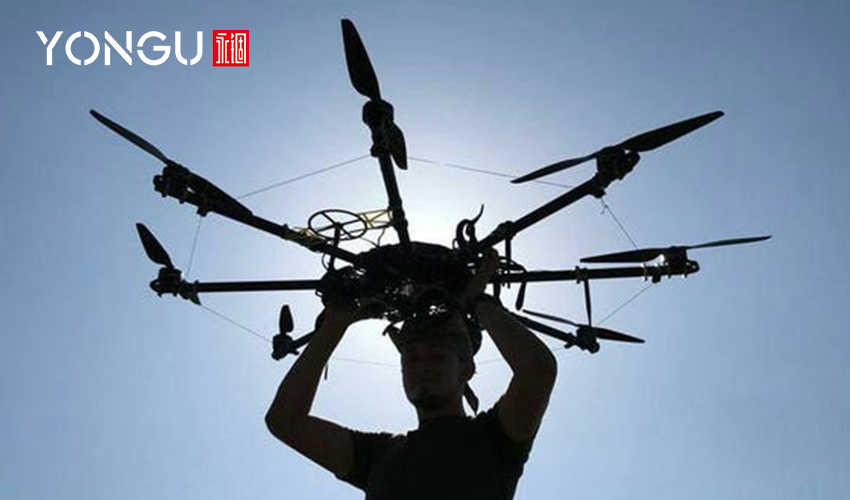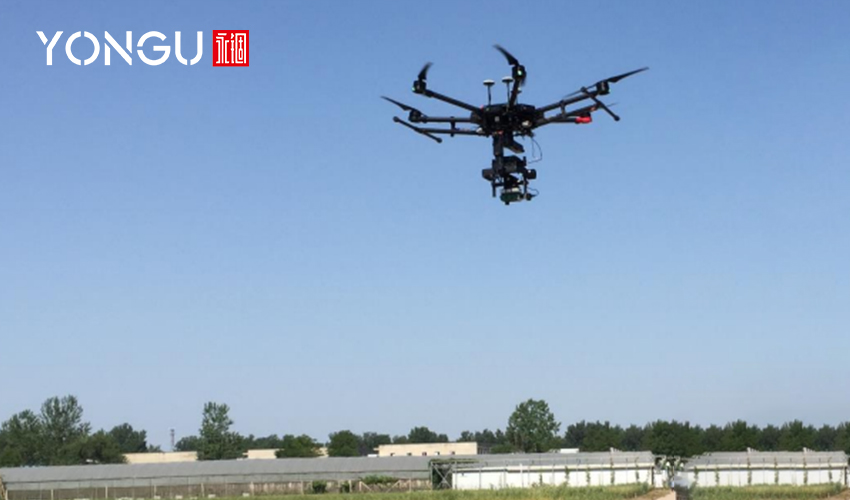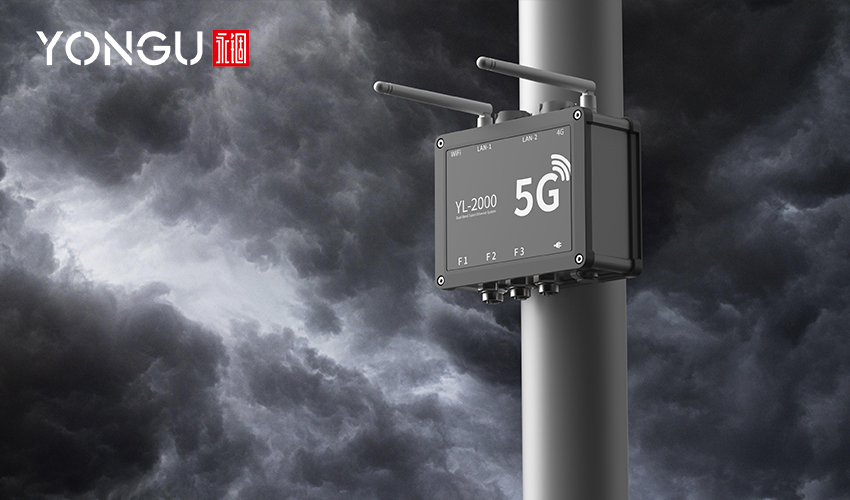
CONVENTIONAL METHODS OF STRINGING POWER LINES
A group of men is dispatched to the ground to carry out the work in the traditional way of stringing. In this procedure, a pilot wire is manually pulled and carried from tower to tower. This pilot wire connects and aids in stringing the line sections with the conductor. The process becomes risky, complex, and time-consuming for the men deployed when the line travels over hilly terrain or forest areas. Depending on the local challenges, connecting the towers to the pilot wire could take two to three days. If the stringing is to be done across highways or railway/power line crossings, the time necessary to close them adds to the project's delays.
DRONE-BASED POWER LINE STRINGING: A NOVEL APPROACH
Drones have been used in the power industry for a few years, but power line stringing is a relatively new application. As we know, traditional power line construction requires workers to climb heavy lines to the towers, which is dangerous. Given the drawbacks of manual stringing, the novel new method of stringing employing drones offers significant advantages. A novel method for stringing electrical lines is using drones. An unmanned drone pulls a lightweight rope in a multi-step process. This first lead line pulls a metal wire, pulling the power cables.
HOW ARE POWER LINES BEING STRUNG BY DRONES?
Drones employ numerous UAS to transport a lead line onto the guide rail of a pulley system and trip the spring-loaded "gate" by exerting force generated by the drone's directed thrust and lift characteristics. When the line is maneuvered to the center of the pulley, the end that is not suspended in the air is dropped. The line can pull a conductor wire through, and a power line is one step closer to being energized.

THE BENEFITS OF USING DRONES
It's a program that promises high cost and time savings, and it has the potential to alter the way electricity companies operate profoundly. Using a drone to bring in the lead line gives numerous benefits, including reduced risk from helicopters and navigating the ROW, reduced need for extra resources to cross existing line crossings, time and money savings, and the capacity to cross rugged terrain.
Safer and reduces life risks
Helicopters or workers climbing towers are used to string large power cables. These procedures, however, can be pretty dangerous. Two workmen laying power lines in north-eastern Pennsylvania were killed after their helicopter crashed in April 2018. As a result, the most significant advantage was the process's safety compared to attempting to complete the task using traditional methods. It demonstrates that drone technology continues to evolve and improve safety and efficiency in construction. Drones lessen this risk and make electrical lines safer to string.
Savings on expenses
The reduction in operational costs results in a 25% savings when stringing electrical lines with drones. Drones are less expensive than helicopters. Drones assist in the fast and safe stringing of high-voltage power lines, saving time and money.
Efficiency and stringing in the remote region
A covered lead line connects the power line to a fast disconnect on the bottom of the drone. Once flying, the drone is carried to a safe location for a drop point on the right of way (ROW) beyond the difficult terrain. The lineman at the structure will catch the rope, and the workers will then release the pilot rope on the ROW using the fast connection on the drone's underside. The method in this application will save several person-hours and only require a few guys to operate, allowing the rest of the crew to continue working on the project.
CHALLENGES TO EMPLOYING DRONES TO STRING ELECTRICAL LINES
The variables influencing a drone mission can pose problems while constructing electrical wires. "When stringing lines, weather, topography, daylight, climate, and other elements affecting UAS missions, in general, are emphasized." A line, or pseudo-tether, can sometimes operate as a safety mechanism if a UAS decides to fly away. Other difficulties include the sorts of pulleys and the height of the towers.
CONCLUSION
Finally, as other organizations learn about the possibilities for power line stringing and develop their pilot projects to adopt the application across their operations, drones can transform how power line stringing is done globally. It is a useful application for all stakeholders, including power line workers, power providers and their consumers, and the drone business.
YONGU IP68 WATERPROOF ALUMINUM ENCLOSURE
IP67 and IP68-rated metal enclosures with excellent heat dissipation. Appropriate for use with robust equipment, industrial gear, or outdoor applications.
Buying an IP68 waterproof aluminum enclosure ensures your device is protected from water and dust. Watertight enclosures ensure total safety. It's the best option for installations in humid environments or other challenging settings. Most commercial and residential applications will be concerned with the IP68 waterproof classification of our electronic enclosure, allowing for submersion up to a specific water depth.

A metal IP68 enclosure provides superior waterproofing and sealing properties owing to its one-piece silica gel seal ring. With its waterproof IP68 rating and well-designed seal screws, and IP68 certification, the enclosure is completely protected from dust and moisture.
Electrical junction boxes with an IP68 rating IP67 and IP68-rated metal enclosures with excellent heat dissipation. Appropriate use with robust equipment, industrial facilities, or harsh outdoor applications.
The IP68 aluminum enclosure is also well-suited for rail transportation, underwater detection, and outdoor monitoring systems. Because of its superior ingress protection, electrical goods may be used in harsh outside environments. Products that have earned the IP68 standard have been proven to operate well in the face of extreme environmental conditions.
If you need an enclosure for your drone that has an IP rating, YONGUBOX offers a wide variety of options that are ready to be tailored according to your requirements. Suppose you want to see YONGU bespoke enclosures in action. In that case, you might look for the organization "metatech," a large manufacturer of power drones and accompanying equipment and a customer of YONGU enclosures.
For further information and customized product of your requirements, please follow our FACEBOOK for more updates and informations.
You can also contact us at +86 13326782625 or write us [email protected].



